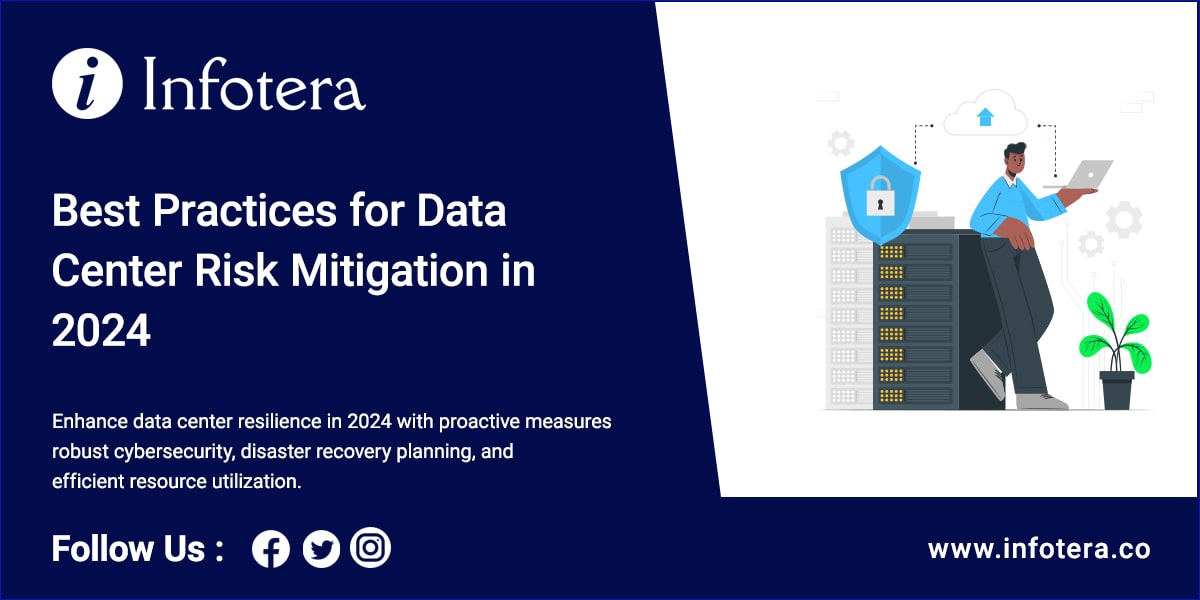The data center industry is continuously evolving to keep up with technological advancements and address emerging risks. As we enter 2024, data center operators need to be proactive in implementing risk mitigation best practices to ensure business continuity and data security. Here are some of the top recommendations for mitigating data center risks in the coming year.
Strengthen Physical Security
Physical security remains a top priority for data centers to prevent unauthorized access and theft of sensitive information. Some best practices include:
- Utilize multi-factor authentication for all entry points. This may include biometrics, security tokens, or codes.
- Install comprehensive video surveillance with high-resolution cameras, both indoors and outdoors. Ensure there is no blind spot coverage.
- Hire on-site security guards to monitor the premises 24/7. Conduct regular patrols and random inspections.
- Restrict access to the server room to essential personnel only. Enforce access log maintenance.
Guard Against Cyber Threats
As cyber threats become more sophisticated, data centers need to implement complex cybersecurity measures. Recommendations include:
- Maintain updated anti-malware, firewalls, IDS/IPS, and other cyber defenses across all assets and entry points. Schedule regular vulnerability assessments.
- Enforce principle of least privilege for access control. Users should only have permissions to what they absolutely need.
- Develop a cyber-incident response plan with clear procedures for detection, response, and recovery. Conduct response drills.
- Provide ongoing staff training on latest cyber risks including phishing, social engineering, and ransomware. Monitor staff actions.
Ensure Power Redundancy
Lack of power can completely shut down a data center’s operations. Some ways to avoid this include:
- Install redundant power systems like uninterruptible power supply (UPS) and emergency backup generators. Conduct regular maintenance and testing.
- Have agreements in place with multiple utility providers for electricity.
- Keep fuel supply on-site for generators to allow extended operation during a prolonged outage.
- Implement power distribution units for individual racks to prevent single points of failure.
Strengthen Disaster Recovery Processes
Disasters like fires, floods, and earthquakes can cause significant data center disruptions. Some disaster recovery best practices are:
- Have a documented disaster recovery plan that is regularly tested and updated. Work with local authorities.
- Utilize alternate sites for off-site data backup and IT infrastructure failover. Test replication to ensure availability.
- Install fire suppression systems with smoke detectors and alarms. Follow fire codes and inspect regularly.
- Elevate critical infrastructure above flood elevation levels. Consider relocation if in high-risk zones.
Optimize Cooling Resilience
Insufficient cooling can lead to dangerous equipment overheating and failure. Here are some tips:
- Install redundant HVAC systems with fault-tolerant features. Perform regular maintenance and inspection.
- Monitor data center temperature and humidity levels in real-time. Automate alerts for anomalies.
- Segment cooling systems into isolated zones for more targeted response. Eliminate hot spots.
- Utilize economizer modes and outside air cooling to reduce HVAC energy consumption.
Implement Robust Structural Designs
Data center buildings must be resilient against hazards. Best practices include:
- Construct with durable materials like concrete walls, raised floors, and fire-rated roofing materials.
- Engineer building to withstand seismic, wind, and other forces per local building codes.
- Select locations with minimal flood and extreme weather risks. Avoid proximity to airports.
- Outfit roofs and external walls with appropriate insulation and sealing to prevent moisture infiltration and temperature extremes.
By proactively implementing these risk mitigation best practices, data center operators can better protect their business assets from threats and ensure maximum uptime in 2024 and beyond. With proper planning and vigilance, even unforeseen incidents can be quickly overcome.
